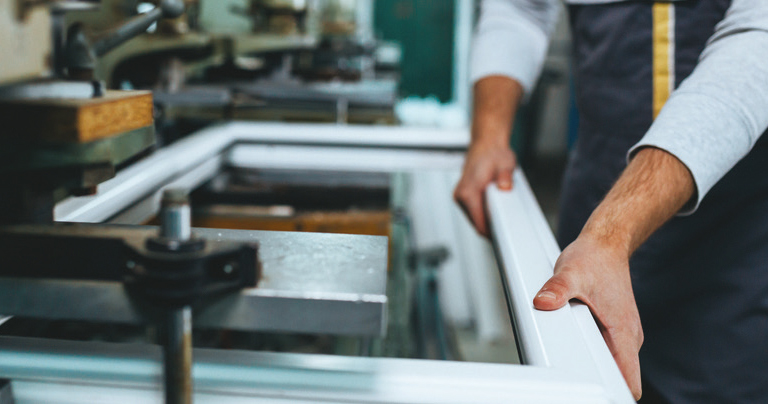Construction & Infrastructure 2021: The way forward
By Edit Team | January 9, 2021 12:07 pm SHARE

As we embark on a new journey in 2021, the construction and infrastructure sector is also looking ahead with optimism on what the New Year holds and the role played by technology across industries.
Indian construction and infrastructure sector faced a challenging 2020 on many different levels. At the start of the year, the world faced coronavirus pandemic and it disrupted the global economy like never before. All the activities came to a grinding halt due to lockdowns imposed around the world and India was no exception either. After the first six months or so, things gradually started improving and the activity across different sectors was finding initial momentum in terms of execution of projects, monetary resources, labour participation etc.
But every problem or hurdle comes with a blessing in disguise and the construction and infrastructure sector also dug deep and came up with innovative and out of the box ideas to slog out during this difficult period. ‘Atmanirbhar Bharat’ mission was also launched in 2020 by PM Narendra Modi amidst much fanfare and this year will be a litmus test for this initiative. The role of digitisation, Artificial Intelligence (AI), Internet of things (IoT) and virtual platforms (Zoom, Microsoft Teams) has gone to the next level. As we embark on 2021, the industry has certainly learned a valuable lesson in taking one day at a time and the way forward will be to make the best out of every situation by embracing chaos and uncertainties.
Embracing technology will be the new normal
The construction industry needs to embrace the use of technology to keep up with the changing times. Praveen Mysore, Director, Infrastructure, India, Dassault Systemes, says, “Technology is not new to the construction sector but its adoption has been slow. The role of technology is at the core of the business in other segments such as automotive, aerospace and without it, they can’t imagine performing their business. The western world has embraced technology in their construction projects by using 3D solutions, tabs, mobile phones to coordinate and executes their projects and I can see the same synergy happening with big construction companies in India.
Companies such as L&T, GMR, and Godrej are not following rudimentary practices and catching up with the technological pace, but the use of technology should be happening across the board for all the tiers. During the Covid-19 pandemic, I did witness companies leveraging technology because remote working, online meeting became part of life, so the adoption is now happening at a faster pace. The next 2-3 years will see widespread use of technology across the industry and will not be restricted to just a few big companies.”
Due to Covid-19, the cost of the projects is likely to escalate and it could have an impact on technology. Praveen doesn’t think so and explains, “Not really. If you dissect and analyse technology, it is one of the key attributes for reducing the cost of projects. Having real-time information, 3D technology will only help you understanding your project and reducing the cost. The initial investment will be high while using technology but over 1-2 years; you will get your return on investment. The concept of 3D printing is not only evolving in the construction sector but also in other spheres. The first-ever 3D printed was there in Paris, France around five years ago and now L&T has made this possible in India. 3D printing is quite costly and it is still in the R&D mode and it will take some time before, people can use this practice for a lower cost. 3D printing technology is still evolving and it will shape up in a big way.”
Construction Equipment (CE) industry is also changing rapidly and technological advancements are taking the industry to the next level. Sandeep Mathur, India CE – Brand Leader, Case India, says, “Technological advancement is an essential part of the CE industry and now even more so. According to a report by Mckinsey, by harnessing industry 4.0 tools like IoT, AI and automation, processes will see 30 to 50 per cent reduction in machine downtime; 15-30 per cent improvement in labour productivity; 10 to 30 per cent increase in throughput; and 10 to 20 per cent decrease in the cost of quality.”
He further adds, “Case has always been a technology-first brand. Globally, we have introduced a lot of product concepts which are loaded with advanced technological features like Project TETRA and our Autonomous tractor concept which is completely driverless, remotely controlled equipment which can increase a working day to a full 24 hours thereby increasing productivity. Recently, we also launched our Site-Watch platform with an all new dashboard, more intuitive navigation and new overview sections that highlight critical information without requiring the user to search extensively for the data.”
Satish Kumar Sharma, CEO, Rodic Consultants Pvt Ltd, agrees with Sandeep Mathur’s view of digitisation playing a crucial role in the construction and infra sector to make sure that projects are executed on time.
Satish says, “Digital transformation through automation is the need of the hour. Rodic is currently embarking on this transformative journey where we will have the opportunity to receive on cloud accessibility from anywhere and anytime. Web and mobile-enabled platforms will be fully integrated with Rodic’s platforms, tracking the project status from the HQ etc. Internally, we have been providing regular training programs on how to use Microsoft Teams so that every individual is well equipped and can be reached on days when they are remotely working. I would also be looking forward to the 2021 Budget as the Government needs to provide additional cash flow facilities to ensure smooth and timely completion of projects in such challenging times.”
As we recover from the pandemic, the new normal for the construction industry will be about making smart, calculative decisions which can execute your plans. Pankaj Udeshi, Assistant General Manager Procurement, Supreme Infrastructure India Ltd, says, “The construction industry was already starting to experience an unprecedented rate of disruption before the Covid-19 pandemic. In the coming years, fundamental change is likely to be catalyzed by changes in market characteristics, such as scarcity of skilled labour, persistent cost pressure from infrastructure and affordable housing, stricter regulations on work-site sustainability and safety, and evolving sophistication and needs of customers and owners. Emerging disruptions, including industrialisation and new materials, the digitalisation of products and processes, and new players, will shape future dynamics in the industry. Construction and infrastructure sector are learning to adopt the use of digital technologies to adhere to social distancing regulations. These digital technologies are completely transforming construction businesses’ operations.”
Taking the Cutting & Welding sector to next level
The use of innovative technologies in the cutting solutions for the PEB sector is also increasing. More so to produce better yield in terms of cost. Utkarsh Landekar, Head – Laser Business (India & Exports), Messer Cutting Systems, says, “Talking about yielding, the plates what you are purchasing and output you are getting and for this practice, we have softwares which can measure the present yield and scope of area for the future yields. To optimize the yield out of the plate, there are softwares which can predetermine yield, area of improvement etc. Even before taking up the project, you can determine the material required and the yield obtained and for the remaining parts, you can have partially cut plates i.e. remnant plates. The size of the project doesn’t matter as every plate can get the best optimization and the library provided in your software stores the unused plate. If you mark those unused plates and store the data then even one plate will not be wasted.”
Chellappan Raghavan, Segment Management – National, Fronius India Private Limited, reiterates the importance of technology being the new normal for the welding sector. He says, “Technology is constantly evolving and innovations are taking place. India is now becoming a manufacturing hub and we cannot think in an outdated way. If we want to export to other nations, make quality products, we need to use the latest manufacturing processes for cutting, welding, painting etc. Welding sector is also progressing to the next level and we have to adapt with times with respect to materials and technology. We cannot waste our manpower, time and resources in producing unwanted products. At Fronius, we are helping our customers in manufacturing with the highest welding speed possible. The coronavirus pandemic has taught industry an important lesson in focusing on quality and not taking it for granted.”
Eco-friendly coatings and paints
The Covid-19 has made people extra conscious about their health, hygiene and also the overall surroundings and this has made people take notice of paints which are eco-friendly and can combat the transmission of Covid-19 on painted surfaces. Prof. AS Khanna, Chairman, SSPC India, states, “In 2016, I had worked on creating antibacterial, antivirus coatings and these coatings are very much possible without a huge amount of technology. I have the required technology and patents to make bacterial-resist, anti-virus coating but the problem lies in the testing process. The problem isn’t the technology per se but the certification which states that the particular paint is designed to neutralise the virus from the surface.”
The road ahead
The year 2021 will give us a fair indication of the progress of the construction and infrastructure sector. As India recovers from the Covid-19 pandemic, the onus lies on all the stakeholders to pull in one direction and be on the same page to take the Indian economy to new heights. Technological advancements and innovations are here to stay and its impact cannot be neglected at any cost.
Cookie Consent
We use cookies to personalize your experience. By continuing to visit this website you agree to our Terms & Conditions, Privacy Policy and Cookie Policy.




































-20240213125207.png)

























